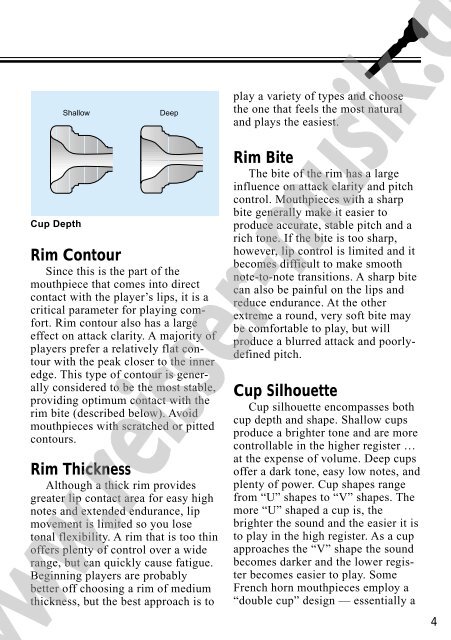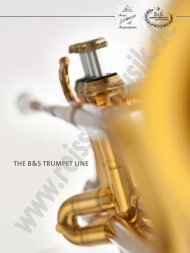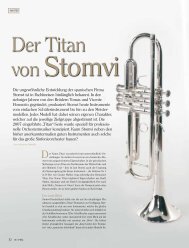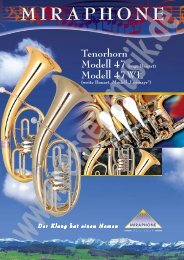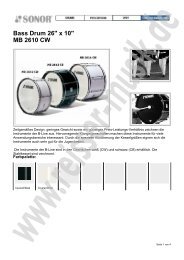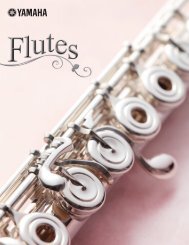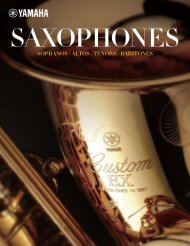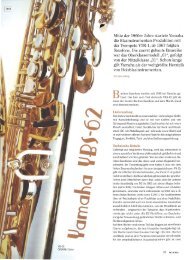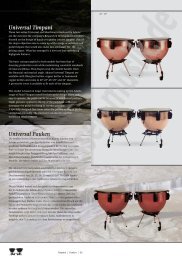Trombone Mouthpiece - Y music
Trombone Mouthpiece - Y music
Trombone Mouthpiece - Y music
Create successful ePaper yourself
Turn your PDF publications into a flip-book with our unique Google optimized e-Paper software.
Shallow<br />
Deep<br />
play a variety of types and choose<br />
the one that feels the most natural<br />
and plays the easiest.<br />
Cup Depth<br />
Rim Contour<br />
Since this is the part of the<br />
mouthpiece that comes into direct<br />
contact with the player’s lips, it is a<br />
critical parameter for playing comfort.<br />
Rim contour also has a large<br />
effect on attack clarity. A majority of<br />
players prefer a relatively flat contour<br />
with the peak closer to the inner<br />
edge. This type of contour is generally<br />
considered to be the most stable,<br />
providing optimum contact with the<br />
rim bite (described below). Avoid<br />
mouthpieces with scratched or pitted<br />
contours.<br />
Rim Thickness<br />
Although a thick rim provides<br />
greater lip contact area for easy high<br />
notes and extended endurance, lip<br />
movement is limited so you lose<br />
tonal flexibility. A rim that is too thin<br />
offers plenty of control over a wide<br />
range, but can quickly cause fatigue.<br />
Beginning players are probably<br />
better off choosing a rim of medium<br />
thickness, but the best approach is to<br />
Rim Bite<br />
The bite of the rim has a large<br />
influence on attack clarity and pitch<br />
control. <strong>Mouthpiece</strong>s with a sharp<br />
bite generally make it easier to<br />
produce accurate, stable pitch and a<br />
rich tone. If the bite is too sharp,<br />
however, lip control is limited and it<br />
becomes difficult to make smooth<br />
note-to-note transitions. A sharp bite<br />
can also be painful on the lips and<br />
reduce endurance. At the other<br />
extreme a round, very soft bite may<br />
be comfortable to play, but will<br />
produce a blurred attack and poorlydefined<br />
pitch.<br />
Cup Silhouette<br />
Cup silhouette encompasses both<br />
cup depth and shape. Shallow cups<br />
produce a brighter tone and are more<br />
controllable in the higher register …<br />
at the expense of volume. Deep cups<br />
offer a dark tone, easy low notes, and<br />
plenty of power. Cup shapes range<br />
from “U” shapes to “V” shapes. The<br />
more “U” shaped a cup is, the<br />
brighter the sound and the easier it is<br />
to play in the high register. As a cup<br />
approaches the “V” shape the sound<br />
becomes darker and the lower register<br />
becomes easier to play. Some<br />
French horn mouthpieces employ a<br />
“double cup” design — essentially a<br />
4


